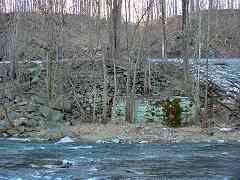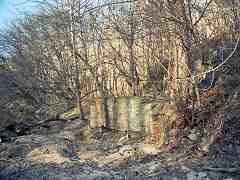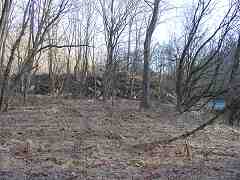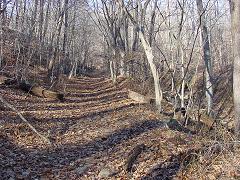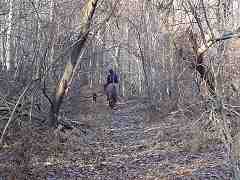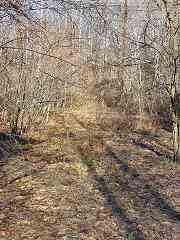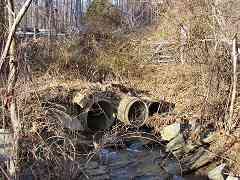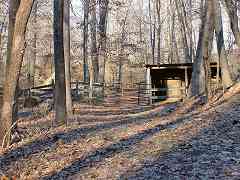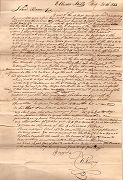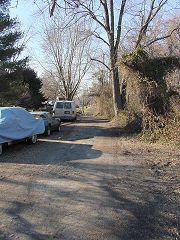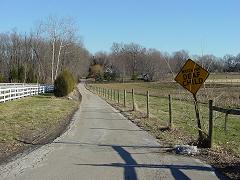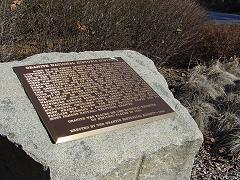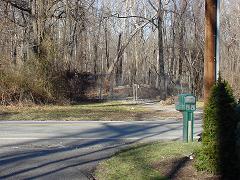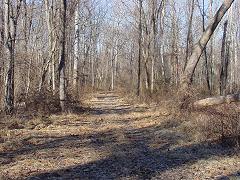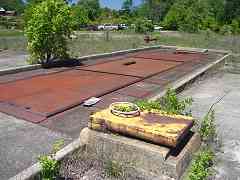|
We are fortunate that some of Riddle's correspondence survives to provide
background historical details. This letter from Hugh Riddle to his brother
John in Bedford, New Hampshire recounts his activities from 1830:
"...in the fall of 1830 we contracted with the B&O to furnish stone and lay the
second track of rails on the 2nd division of the B&O R Road embracing a distance
of 12 miles."
Hugh also writes about the laying of track between the quarry and the B&O. In
exchange for $25, a landowner named Owings permitted the construction of the spur
through his farm. A disagreement arose that led to Owings seeking injuction
against the quarry company, and later filing a $5000 lawsuit. These suits
date to March 30, 1832 and Feb 28, 1833 as Nicholas Owings vs. Enoch Sweat,
Enoch Lake, True Putney and Hugh Riddle.
By 1836 Enoch Lake had relocated to Quincy, Massachusetts. From various sources it
seems that different combinations of the same group of stone cutters had contracts
with B&O, and others such as the C&O Canal, under various company names.
For example, the second pair of stones stringers for the second division was Sweat & Co.,
while some of the bridges were handled by Putney, Riddle and others. In 1832 Riddle
was at New Castle, Delaware, probably working with Sweat on the New Castle - Frenchtown RR.
In 1835 Riddle was in Baltimore building a warehouse for the Federal Government
(not the customs house). He received permission from the city of Baltimore
to lay "railroad track" from the B&O to the Federal land where he was building,
contingent on the agreement of a majority of the landowners affected.
At the same time Riddle was recommending the stock for the Savage Railroad to his
relatives in New Hampshire. He and Putney were going to invest $1000. The Savage
Mill is not mentioned in the correspondence, only the quarry. Peter G. Gorman may
have been involved in this project. Sources say Gorman had the contract for the
section of rail from Ellicott Mills to Woodstock.
Riddle was in the Woodstock area until at least 1844. In 1838 he wrote
his brother from Woodstock that he was finishing two bridges for B&O,
perhaps the disused piers now found at Daniels. By 1848 he had moved to Laurel,
and in 1849 seeking to dig more than granite, Riddle became a 49er. His last
known letter was mailed from St Joseph, Missouri, as he was heading to
California along the Overland Trail. He died enroute.
|
